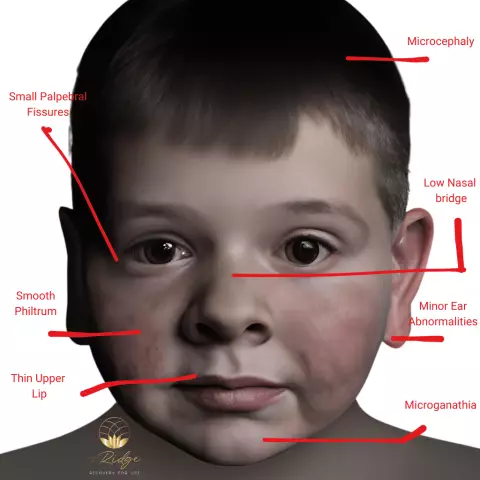- Author Rachel Wainwright [email protected].
- Public 2023-12-15 07:39.
- Last modified 2025-11-02 20:14.
Psychoorganic syndrome

Psychoorganic syndrome is a conventional designation of pathologies leading to organic brain damage, which is characterized by a combination of three main symptoms: decreased intelligence, memory impairment and emotional lability (Walter-Buel triad). Depending on which part of the brain is damaged, other mental disorders can join the triad - visual and auditory hallucinations, Korsakoff's syndrome, as well as neurological disorders, up to confusion and coma.
Causes of the psychoorganic syndrome
The causes of the psychoorganic syndrome are the following pathological processes:
- Vascular diseases of the brain;
- Lesions of the central nervous system;
- Traumatic brain injury;
- Chronic metabolic disorders;
- Hypoxemia;
- Intoxication;
- Infections;
- Tumors and abscesses.
Mental weakness is also possible with syphilis, encephalitis and epilepsy. No less often it occurs due to atrophic processes in old age, for example, in Alzheimer's disease.
Classification and symptoms
There are 4 stages of development of the psychoorganic syndrome:
- Asthenic;
- Explosive;
- Euphoric;
- Apathetic.
Asthenic syndrome is characterized by the following symptoms:
- Physical and mental exhaustion;
- Irritability;
- Hyperesthesia;
- Incontinence of affects;
- A slight decrease in intelligence;
- Mild dysmnestic disorders.
In patients, abrupt changes in climatic conditions cause deterioration. Heat intolerance is noted.
In the explosive stage, the clinical picture of the psychoorganic syndrome includes:
- A combination of emotional lability and aggressiveness with minor memory impairments and impaired adaptation;
- Loss of self-control, strengthening of drives and weakening of volitional delays;
- Chronic alcoholism, which develops as a result of attempts to relieve internal tension and irritability with alcohol, which only worsens the general condition and increases organic failure;
- Tendency to overvalued ideas and paranoia;
- Hysterical forms of reactions to non-fulfillment of requirements or obstacles in the implementation of plans.
With the euphoric, or morioid, variant of the psychoorganic syndrome, working capacity is severely limited. This condition is accompanied by an improvement in mood with euphoria and complacency, a significant decrease in criticism of one's condition, and severe memory disorders. A hallmark is violent laughter or crying, the cause of which is quickly forgotten, and the mimic reaction can persist for a long time already without emotional content. Some patients have fits of anger, followed by helplessness and tearfulness.
With an apathetic form, an apatoabulic state develops. The circle of interests is sharply narrowed, indifference to oneself and others appears. Symptoms resemble schizophrenia or epileptic illness, from which psychoorganic syndrome is distinguished by dysmnestic disorders, asthenia and violent crying and laughter. Signs of organic damage to the central nervous system are strongly expressed.
Psychoorganic syndrome in children
A number of age-related characteristics have psychoorganic syndrome in children. The underlying organic lesions of the brain arise during the intensive evolutionary development of the systems and functions of the brain with varying degrees of morphophysiological immaturity of the central nervous system.
Up to 4-5 years of age, a decrease in intelligence is expressed in a slight delay in speech development and a poor vocabulary. Verbal tasks are performed worse than non-verbal ones. There is no interest in stories and fairy tales, songs and poems are poorly remembered. Neuropathic disorders resemble the symptoms of congenital childhood nervousness and include:
- Increased excitability;
- Dyspeptic disorders;
- Regurgitation and vomiting;
- Allergy;
- Incorrect alternation of wakefulness and sleep;
- Poor appetite;
- High sensitivity to external influences;
- Impressionability;
- Unstable mood;
- General motor disinhibition;
- Fussiness;
- Perceptual disorders;
- Discoordination.
From 4-5 years old, psychoorganic syndrome in children is characterized mainly by emotional-volitional and motor disorders:
- Increased affective excitability;
- Irritability;
- Impulsiveness;
- Insufficient sense of distance
- Intrusiveness;
- Frequent mood swings;
- Motor disinhibition;
- Weak attention;
- Delayed motor development.
At the same time, vegetative disorders recede into the background.

In schoolchildren and adolescents, the psychoorganic syndrome manifests itself more diversely, and intellectual dysfunction, impulsivity, and lack of self-criticism are more pronounced.
Treatment of psychoorganic syndrome
Assessment of the severity of the psychoorganic syndrome, both in adults and in children, is carried out using a meteopathic reaction test. The so-called Pirogov syndrome consists in the fact that the patient's condition changes with an increase or decrease in barometric pressure. A more serious condition is diagnosed when a person feels worse before pressure fluctuations, and not after them.
Treatment of the psychoorganic syndrome should be aimed at eliminating its root cause. With confirmed organic brain diseases, antibiotics, antiviral and hormonal drugs are used. As a pathogenetic therapy, detoxification and dehydration are carried out, and medications are prescribed that normalize hemodynamics and brain metabolism. Symptoms are treated with anticonvulsants, decongestants, and vascular agents. Psychotropic drugs and immunotherapy are also achieving a positive effect.
YouTube video related to the article:
The information is generalized and provided for informational purposes only. At the first sign of illness, see your doctor. Self-medication is hazardous to health!






